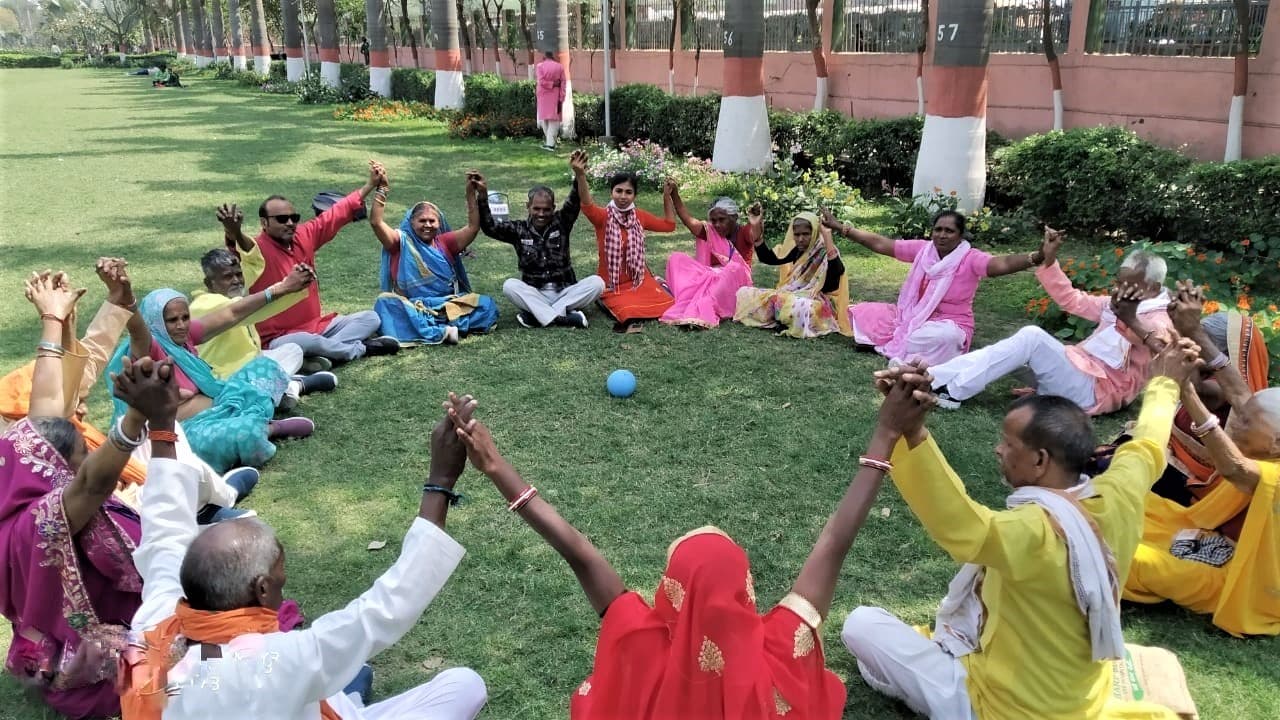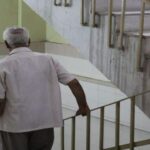We are all gearing up for Viksit Bharat 2047. We all have our own aspirations and dreams and maybe our own vision of the future. But some things are common like a developed strong economy, healthy, active and happy individuals. The Government is taking many steps in that direction, we as individuals are also taking steps in our own ways not only for ourselves but also for our children. Many believe that is enough to take care of the future. However, there is something else that we at times overlook in our enthusiasm. Imagine yourself in 2047, if you are 20+ you will be probably at the peak of your career with the world beneath your feet. If you are 40+ you will be preparing for…let us see…enjoyable retirement….second innings….volunteering for common causes.
Your choices will be yours but will be guided by and impacted by many extraneous factors. Most important preparedness. Generally, the term is used in the context of disaster or war, but now with the estimates of population aging and increased longevity, we need to discover the importance of this term in mundane affairs. For longevity and ageing both will impact each and every one in human society, irrespective of class, colour, creed, gender, area and occupation. If we divide the population roughly into old and young, it has implications for both the groups; the currently young have to take care of the old and one day they will be old. The currently old have to worry about how to make ends meet, remain healthy and active and thereby independent, reinvent themselves for the new realities of life. The longer you live the more you have to reinvent and adapt. Rather simple. Let’s add some nuances to it. The norm is that if you are in the organised sector you will retire at any age between 55 to 65 years. You have some savings, but inflation will silently devour the value over the years. If you are not aware of new and more efficient ways of investing your money, chances are that by the age 80 you will be left with nothing substantial. If you are a woman, with a very small base and better longevity than men, you will run into rough weather sooner.
You are a self-respecting person and want to continue to work and earn until you are active and fit. You look around and find that you lack skills to be reemployed. You may not know computers as well. You may find it difficult to commute. You may find the 9 am to 5 pm job too much and want to work only half a shift. There may be few older persons who will find the perfect fit. But if 19% of our population is expected to be in that age group then this should be the norm. There should be work opportunities, care facilities and mobility options that serve this segment of the population.
If you are a younger person, you will be expected to take care of your parents and/or parents-in-law, children and save for yourself. Population trends with below replacement rates mean that you are not likely to have many siblings who can share the responsibility. Morally, culturally and legally you are responsible for taking care of your parents, particularly if they are themselves unable to. You can’t take off from work. You look for paid help. In most cases it is either unavailable or too expensive. So, you will most probably depend on an unskilled maid working in your area. Apprehensive about some untoward incident. You need age care services that cater to the specific needs of the older members of the household, and safety of the members and of course affordable. There may be such services available in and around metro cities. But if we go into Tier II cities, these services are unheard of.
This year in June HelpAge India released a research report that focused on the experiences of older persons from the lower- and middle-class families from Tier I and Tier II towns in 10 states. The main points that need to be highlighted were: low work participation rate, no and low income and savings, dependence on others to manage assets. Further, there was near complete dependence on public healthcare facilities, low health insurance coverage (mainly Pradhan Mantri Jan Arogya Yojana (PMJAY) and State schemes), near complete dependence on family for physical and financial health needs. Many older persons or couples living alone had no caregiver, family members expressed stress in shouldering care responsibilities. We found elder abuse, more so in cases where elderly were dependent on family, with very low awareness of the provisions of Maintenance and Welfare of Parents and Senior Citizens Act 2007. 41% senior citizens had access to digital devices mainly smartphones and only 1 in 5 could use it comfortably.
Given this ground situation, it is pertinent that we start using an age-friendly perspective to create a Viksit Bharat that is also a society for all ages. The best opportunity for giving it a boost is inclusion of the following in the upcoming Union Budget:
Revisit Upper Age Limits in Schemes and Special Focus on Older Persons
Revisit the age limit for various enabling schemes of the government to include the older persons. For the older persons to be included in Digital India, the upper age limit for digital literacy under PMGDISHA should be 70 years. Similarly, the PM Mudra Yojana loans’ age eligibility is maximum 65 years and excludes many seniors who in later years want to pursue small businesses. The PM Jan-Dhan Yojana (PMJDY) is vital for financial inclusion, but the age limit for opening a Jan Dhan account is set at 59 years. Financial preparedness, especially amongst older women, is stark and leaves them completely unprepared in later years. Special focus on financial literacy for 50+ is needed.
National Minimum Pension Floor
As remarkably done for health under PMJAY, the Central Government can take lead in defining a basic minimum social pension across the country. Accordingly, revise central contribution (INR 200-500 currently, which has not been revised over the last 17 years) to at least Rs 1000 per month per beneficiary for 60+ and Rs 1500 per month for 80+ age group. With the state government contribution (which currently ranges between Rs 500-2000), the country will then have a national minimum floor of about Rs 1500 and extending up to Rs 3000, depending on the state’s fiscal ability to add to the minimum floor set by the Central government.
Opportunities for Becoming Independent
Alongside, encouraging community-based approaches such as taking Elder-Self-Help-Groups model to scale (being taken up by the National Rural Livelihood Mission) across all districts to benefit disadvantaged elders from financial, health and digital inclusion. Action Groups Aimed at Social Reconstruction (AGRASR) is a step in the right direction, but more needs to be done.
Focus on Geriatric Healthcare
The Government may extend PMJAY to the 60-70 age group, but with income limits to address the Above Poverty Line (APL) and low-income middle class. Alongside, the private sector should be encouraged to design a targeted, comprehensive and affordable geriatric health insurance product.
The Government’s landmark announcement for enrolment of 70+ older persons in the PMJAY will ensure coverage of about 40% of older persons, it is to be noted that 60% of older persons are currently in 60-70 age group, and surveys indicate more than 70% in this age group do not have health insurance. The prime reason for this is that most are in the unorganised sector (no employer supported insurance) and affordability of private insurance is beyond their means when they need it most.
On the provision side, the National Programme for Health Care of Elderly (NPHCE) is one of the most comprehensively designed geriatric care programs which was launched in 2010. Accelerated implementation of NPHCE program is required in all districts in a mission mode.
A separate scheme for Geriatric Help Desks at tertiary care hospitals can immensely benefit thousands of elders accessing and navigating OPD units, many who are alone and/or functionally challenged.
Urgent Attention on Long-Term Care System
Rising vulnerability in old age (75% with chronic diseases, 40% with functional disability) and life expectancy is leading to rapidly rising and differentiated needs for caregiving (longer phase of care, which is distinct from episodic clinical/disease centred healthcare). A trained pool of geriatric caregivers would be a critical part of such a long-term care system.
Emphasis on Skilling and Job Opportunity
The Government had launched a job portal for seniors (Senior Able Citizens for Re-Employment in Dignity – SACRED) but there should also be incentives for the corporate sector for retaining, retraining and/or employing older workers. Given the ‘digital divide’ elders are facing and its consequent effects (lacking access, affected by cyber fraud), a new programme for Digital Literacy for Elders could be taken up under Digital India (Common Service Centres/ Ministry of Electronics and Information Technology) with requisite allocation of funds.
Income Tax
Most elders in the income tax bracket survive on savings, pension and interest income. Living costs, particularly health and care, pose substantial challenges. It is proposed that exemption of annual income of senior citizens be raised to Rs 10 Lakh (currently 3 Lakh for 60+, and 5 Lakh for 80+). Under Section 80TTB, deduction for interest from deposits be raised to Rs 1 lakh (from Rs 50,000 currently). Since affordability of private health insurance is one of the main barriers, enhance the tax deduction for seniors under Section 80D from Rs. 50,000 to Rs. 100,000, and remove GST (currently at 18%). A new provision for care allowance, particularly for women from low-income families, recognising their caregiving role and giving them monetary benefit.






